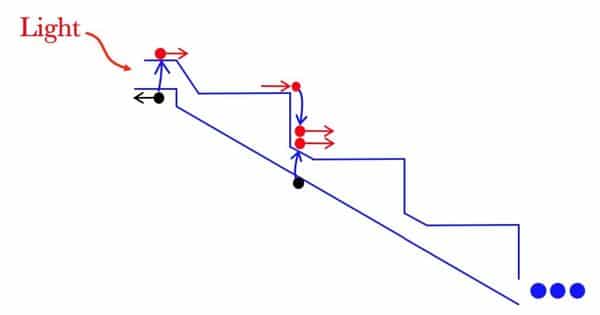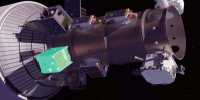A new light-detecting device can more accurately amplify weak signals bouncing off distant objects than current technology allows, providing autonomous vehicles with a more complete picture of what’s going on the road.
Realizing the potential of self-driving cars is dependent on technology that can detect and react in real-time to obstacles and other vehicles. Engineers from The University of Texas at Austin and The University of Virginia developed a first-of-its-kind light detecting device that can more accurately amplify weak signals bouncing off of distant objects than current technology allows, providing autonomous vehicles with a more complete picture of what’s going on the road.
“Autonomous vehicles send out laser signals that bounce off objects to determine their distance. Because not much light is returned, if your detector produces more noise than the signal received, you will receive nothing “Joe Campbell, an electrical and computer engineering professor at the University of Virginia School of Engineering, agreed.
The new device is more sensitive than other light detectors in that it also eliminates inconsistency, or noise, associated with the detection process. Such noise can cause systems to miss signals and put autonomous vehicle passengers at risk.
To meet these demands, researchers all over the world are developing avalanche photodiodes. The staircase-like alignment of this new device, however, distinguishes it. It includes physical energy steps that electrons roll down, multiplying and creating a stronger electrical current for light detection as they go.
The researchers developed a single-step staircase device in 2015. They have demonstrated for the first time a staircase avalanche photodiode with multiple steps in this new discovery, which was published in Nature Photonics.
“The electron is like a marble rolling down a flight of stairs,” Seth Bank, a professor in the Cockrell School’s Department of Electrical and Computer Engineering who led the research with Campbell, a former Cockrell School professor from 1989 to 2006 and UT Austin alumnus, said (B.S., Physics, 1969). “When the marble rolls off a step, it drops and collides with the next one. In our case, the electron performs the same function, but each collision releases enough energy to free another electron. Although we begin with one electron, falling off each step doubles the number of electrons: 1, 2, 4, 8, and so on.”
The new pixel-sized device is ideal for Light Detection and Ranging (lidar) receivers, which need high-resolution sensors to detect optical signals reflected from distant objects. Lidar is a critical component of self-driving car technology, with applications in robotics, surveillance, and terrain mapping.

Increasing the number of steps improves the device’s sensitivity and consistency. And, because electrons are consistently multiplied with each step, the electrical signals from the detector are more reliable, even in low-light conditions.
“The less random the multiplication, the weaker the signals you can pick out from the background,” Bank explained. “For example, a laser radar system for autonomous vehicles could look out to greater distances.”
This type of sensing capability has been around for decades, but technological barriers have stifled its advancement. Photomultiplier tubes have long been regarded as the “holy grail” of this type of sensing, according to Bank, but the technology has been around for more than 50 years and employs obsolete lighting components and vacuum tubes. Federico Capasso, the inventor, first conceived of the avalanche photodiode technology that the researchers have been studying in the 1980s. However, the tools and techniques needed to make it a reality were not yet developed sufficiently.
According to Bank, the science behind this breakthrough is based on a new method of growing materials. Instead of growing materials with randomly distributed atoms, they created layered alloys composed of binary compounds stacked on top of each other.
“What this allows is to change the electron’s energy landscape in a very simple way to create the structure that Capasso envisioned in the early 1980s, but unfortunately there just wasn’t the ability to synthesize crystals with all the required properties,” Bank explained.
Another significant feature of this device is its ability to operate at room temperature. The most sensitive light detectors today must be kept at temperatures hundreds of degrees below zero, making them prohibitively expensive and impractical for applications such as lidar.
The Army Research Office (ARO) and the Defense Advanced Research Projects Agency (DARPA) funded the study (DARPA). The researchers have received funding from ARO and DARPA to refine their process and add more steps to the devices. They’re also collaborating with a semiconductor company to commercialize the technology.
Another significant feature of this device is its ability to operate at room temperature. The most sensitive light detectors today must be kept at temperatures hundreds of degrees below zero, making them prohibitively expensive and impractical for applications such as lidar.
The Army Research Office (ARO) and the Defense Advanced Research Projects Agency (DARPA) funded the study (DARPA). The researchers have received funding from ARO and DARPA to refine their process and add more steps to the devices. They’re also collaborating with a semiconductor company to commercialize the technology.
















